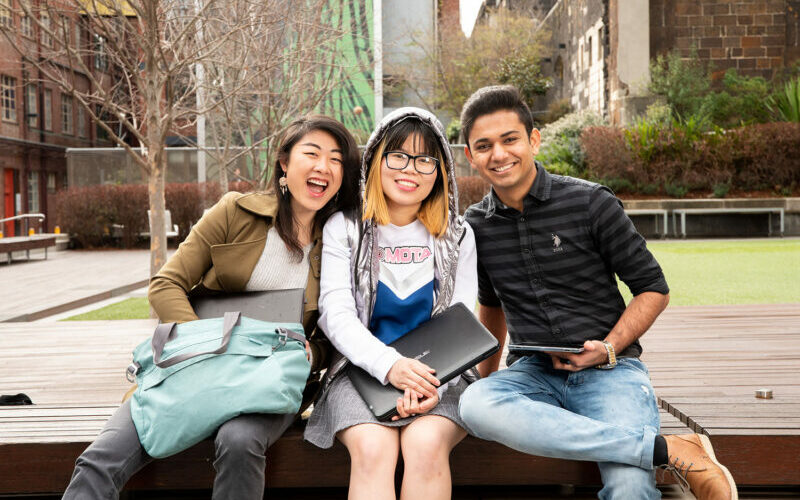The Australian international student sector, which has driven growth, profits and world-leading vice-chancellor salaries at Australian universities, is under attack. Michael Sainsbury reports.
International student numbers are falling at many Australian universities but efforts to unwind the explosion in numbers are leading the sector into chaos, one former chancellor told MWM.
The Albanese government’s attempts to wrestle with record immigration and an unprecedented housing crisis are the driving issue, and in the process, they are maiming the higher education sector’s golden goose.
It’s a highly complex situation that involves immigration, education and housing. A litany of policy decisions stretches back to the Keating administration, that has seen international student revenues replace government funding, in turn corporatising universities.
This week, the government announced the second hike in seven months in the savings that students must demonstrate to gain a visa. International students must show proof of savings of at least $29,710 to obtain a (not guaranteed) visa. The savings requirement was raised to $24,505 from $21,041 in October.
This comes after IELTS (International English Language Testing System) English literacy scores were raised from 5.5 to 6.0 for a study visa, and from 6.0 to 6.5 for a graduate visa, to “improve their chances of success in Australia.”
International student numbers surged back faster than expected following the COVID hiatus that saw the sector’s first-ever slump. As of February 2024, there were 703,245 enrolments by international students, compared with 578,930 in the same period of 2019. The commencement count for this period of 177,093, and the number of enrolments carried over from the previous year is the highest on record.
A “genuine student test” was also recently introduced. It aims to identify students coming primarily for work, and more student visas are being issued with no “further stay” opportunities. The government is also cracking down on providers misusing “concurrent enrolment” loopholes to facilitate work access for students who only recently arrived.
Together, these reforms are aimed at weeding out non-genuine students who are using education as a path to permanent residence.
Confusing reforms
One former Chancellor, who asked not to be named, told MWM, “The only way to describe the confusing number of reforms by the government is chaos.
“The truth is that international students have been driving Australian immigration for over a decade. But this was not a planned policy outcome, it just happened,” he added. “This means trying to unwind the sector in any coordinated and logical way is fraught.
The problem is, the government is using a sledgehammer, and it’s not clear what the overall goal is with regard to universities and higher education institutions.
As a result, international student numbers at the second and third tiers of Australia’s 34-strong university sector are now falling. For instance, Victoria’s Federation University has seen a drastic decline of 49% in international student enrolment since 2019. This resulted in financial losses and staff layoffs.
Charles Sturt University has been hit hard as well, with a 64% decrease in international student numbers compared to 2019. Their revenue per student has also dropped by 48% as visa refusals for students from South Asia, in particular, spiked.
Recruiters for the sector say the sector has experienced a double whammy of policies and reversals, with numbers falling in the July 2023 and February 2024 intakes. This is also playing out, in some cases dramatically, in the country’s 155 other private higher education institutions.
A veteran of the international student recruitment sector based in Hong Kong, speaking to MWM in confidence, said that there has been a sharp decline in visas issued to students from South Asia and that students’ preferred countries are shifting away from Australia and the Anglosphere.
Further evidence that the government is not looking at the issue – and the sector – holistically is that some reform comes from Immigration (Home Affairs) and some from Education.
The education agent said, “Normally when Immigration makes changes to policy, they normally engage the sector as a whole and provide updates to the sector generally. What they’ve done this time, though, is refuse to engage the market as a whole and insist on 1:1 meetings/engagements with each institution. Very dodgy.”
The universities are complaining
Once more, universities’ overpaid senior executives and lobbyists – such as Universities Australia – are shrieking.
To try and run their case, they are leaning into one of the greatest lies in Australian economics: that international students are the country’s biggest export, a whopping $40 billion a year, second only to the mining sector.
The number and its propagation by the sector and governments of both stripes are fundamentally flawed. They are based on figures produced by the Australian Bureau of Statistics (ABS) that fail to net off income earned by students while working in Australia as well as the money sent back to their home countries.
As economist Cameron Murray wrote last year,
Only a strange statistical assumption has created a ‘$40 billion export industry’ out of one that is probably closer to a $15-20 billion one. Or less. We don’t know.
Apart from China and Malaysia, students from every other country in the top 10 have workplace participation rates of more than 50%, meaning that those students are earning and spending money on fees, rent and other cost of living expenses. As such, these sums are domestic consumption rather than exports. The workforce participation rate for students from China was 22% in the 2016 consensus. In comparison, the rate for Indian students was 78%, Nepalese 87% and students from the Philippines 80%.
Such inaccuracies are becoming a habit in the sector, with the universities themselves also claiming that the government is running another lie – that students are to blame for the housing crisis – and they have research to prove it.
Professors rebuke uni bosses for profit obsession, foreign students, sagging standards
Housing impact
A report last week from the legit-sounding Student Accommodation Council (SAC) said international students had “unfairly worn the blame for Australia’s rental crisis” and were “not the cause” of rising rents or low vacancies, making up just 4% of renters nationwide.
But digging a bit deeper, the SAC is actually an arm of the property lobby group the Property Council of Australia, “launched in 2022 and specifically created to represent and advocate for Australia’s Purpose Built Student Accommodation sector.” The report was written by an expensive, get-what-you-pay-for consultancy, Accenture.
Sydney Uni Associate Professor Salvatore Balbones, author of “Australian Universities: Can They Reform?”, tore the report to shreds in an interview with news.com.au: “They didn’t do the simple math. In their minds, they were showing that international students had no impact on the rental market. They didn’t realise their own data, which they’re promoting, actually contradicts their claims.”
Next week’s budget has been tipped to feature a rise in visa fees for international students, already the highest in the world at an (non-refundable) $700. but the government has now reportedly pulled back on visa caps.
Careful what you wish for
Still, Australia is hardly alone. The UK and Canada, two other markets that have recently opened the floodgates to international students in recent decades, are also wrestling with the problem.
Sometimes, however, governments should be careful what they wish for. The dramatic and sustained assault on the international student sector comes as Chinese students, still the higher value in the market who genuinely seek good education, are making new choices..
The Chinese market is changing. There is a real surge of students going to Hong Kong and Singapore. The Hong Kong recruiter told MWM:
Combined with confusing government policies, this would be an unwanted perfect storm for many Australian universities.
The real victims of reactive and muddle-headed government policy may be Australian students, who are faced with institutions under financial stress offering fewer and lower-quality courses.
Michael Sainsbury is a former China correspondent who has lived and worked across North, Southeast and South Asia for 11 years. Now based in regional Australia, he has more than 25 years’ experience writing about business, politics and human rights in Australia and the Indo-Pacific. He has worked for News Corp, Fairfax, Nikkei and a range of independent media outlets and has won multiple awards in Australia and Asia for his reporting. He is a fierce believer in the importance of independent media.

